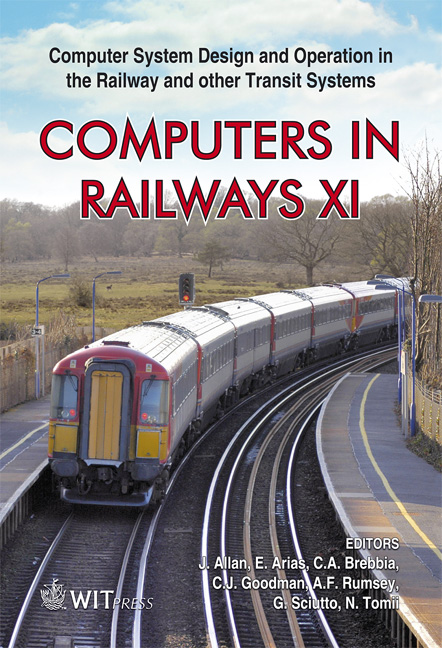DC Protection Calculations – An Acceptable Approach
Price
Free (open access)
Transaction
Volume
103
Pages
14
Page Range
425 - 438
Published
2008
Size
644 kb
Paper DOI
10.2495/CR080421
Copyright
WIT Press
Author(s)
R. Leach, D. Tregay & M. Berova
Abstract
As a consequence of substantial changes to the railway track layout and implementation of a new approach to the renewal of negative bonding as part of a Major UK Railway Signalling Infrastructure Project, the need arose for reassessment of the existing electrical circuit impedances. This was necessary to ensure that circuit breakers and relays, protecting the portion of the third rail DC traction power supply network in question, had safe protection settings employed to continue to ensure safety under electrical fault conditions. This paper outlines the challenges that needed to be overcome in gathering, processing and reconciling input data to arrive at a complete, coherent and consistent set of data necessary for the calculation of the maximum fault impedances seen from each of the circuit breakers. The paper goes on to present the development, implementation and application of the methodology for the calculation of the protection settings. The process, illustrated with a flow-chart, was developed based on the relevant railway standards and guidance documents reflecting best practice, taking into account previous experience and the lessons learnt from other recent Power Upgrade projects. The methodology is based on modelling the feeding arrangement with an equivalent electrical circuit and was implemented into a spreadsheet based calculation tool. The tool facilitates the choice of feeding scenarios, the input and validation of data and enables sensitivity studies of the effect of various circuit components. A particular challenge of the application of this methodology and tool was the identification of the worst fault scenarios, especially in large switches and crossings areas with multiple ‘Tee’ feed connections at various points along the track. Such problems were solved by modelling and carrying out simulations for various scenarios to determine the worst case. The methodology and computational tool were validated for every application by comparing the results with those obtained by an independent computer programme. The analysis of the protection setting calculation results demonstrated surprising conclusions contrary to original expectations. Keywords: power supply, DC railway, negative bonding, protection settings, modelling, computational techniques.
Keywords
power supply, DC railway, negative bonding, protection settings, modelling, computational techniques.





